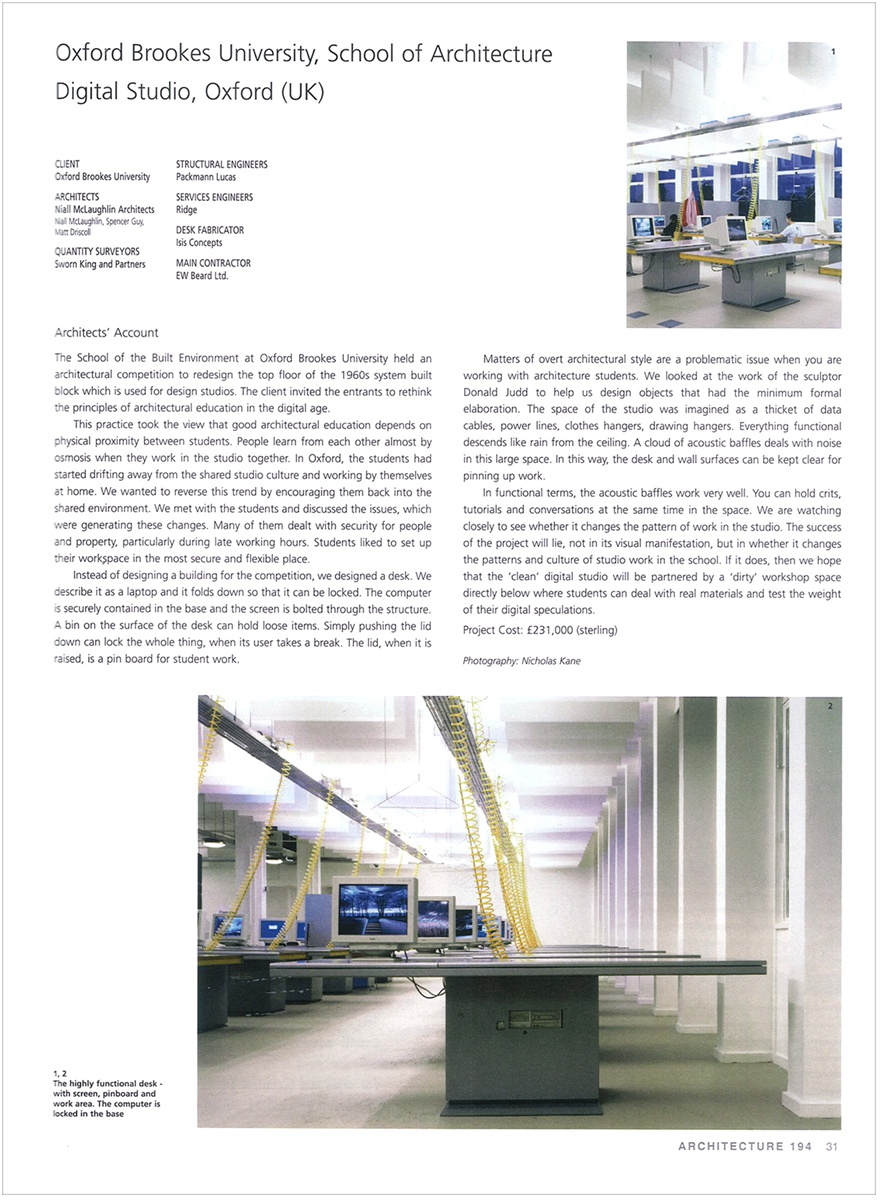Digital Studio, School of Architecture, Oxford Brookes University - Architecture Ireland
Issue 194
May 2006
Text Níall McLaughlin Architects
Images Nick Kane
The School of the Built Environment at Oxford Brookes University held an architectural competition to redesign the top floor of the 1960s system built block which is used for design studios. The client invited the entrants to rethink the principles of architectural education in the digital age.
This practice took the view that good architectural education depends on physical proximity between students. People learn from each other almost by osmosis when they work in the studio together. In Oxford, the students had started drifting away from the shared studio culture and working by themselves at home. We wanted to reverse this trend by encouraging them back into the shared environment. We met with the students and discussed the issues, which were generating these changes. Many of them dealt with security for people and property, particularly during late working hours. Students liked to set up their workspace in the most secure and flexible place.
Instead of designing a building for the competition, we designed a desk. We describe it as a laptop and it folds down so that it can be locked. The computer is securely contained in the base and the screen is bolted through the structure. A bin on the surface of the desk can hold loose items. Simply pushing the lid down can lock the whole thing, when its user takes a break. The lid, when it is raised, is a pin board for student work.
Matters of overt architectural style are a problematic issue when you are working with architecture students. We looked at the work of the sculptor Donald Judd to help us design objects that had the minimum formal elaboration. The space of the studio was imagined as a thicket of data cables, power lines, clothes hangers, drawing hangers. Everything functional descends like rain from the ceiling. A cloud of acoustic baffles deals with noise in this large space. In this way, the desk and wall surfaces can be kept clear for pinning up work.
In functional terms, the acoustic baffles work very well. You can hold crits, tutorials and conversations at the same time in the space. We are watching closely to see whether it changes the pattern of work in the studio. The success of the project will lie, not in its visual manifestation, but in whether it changes the patterns and culture of studio work in the school. If it does, then we hope that the ‘clean’ digital studio will be partnered by a ‘dirty’ workshop space directly below where students can deal with real materials and test the weight of their digital speculations.
